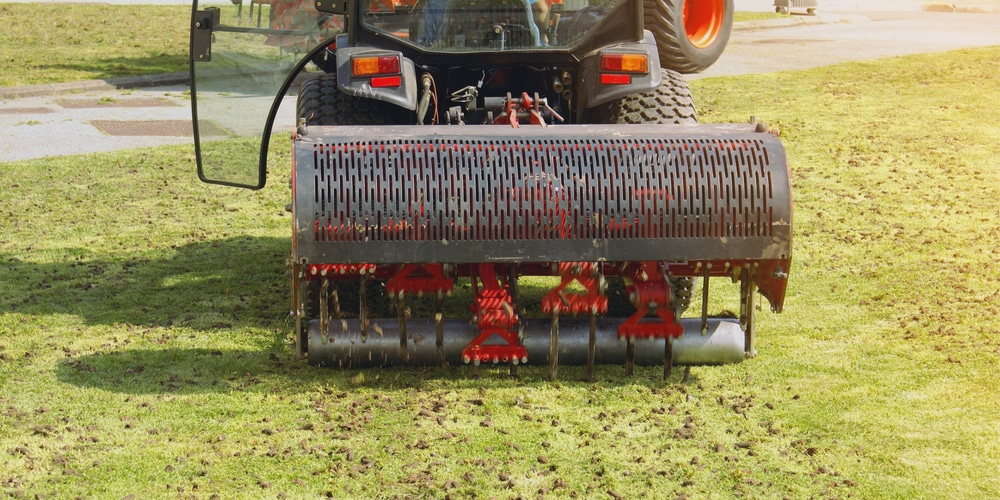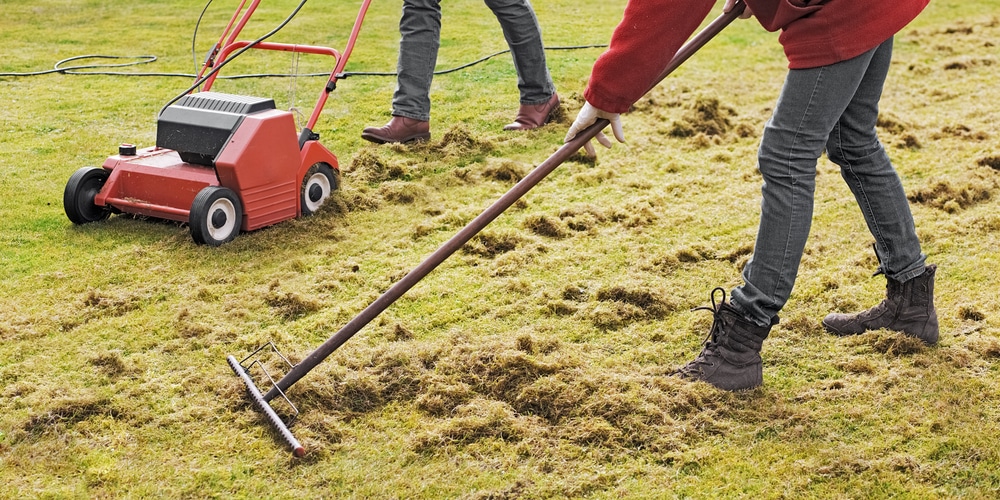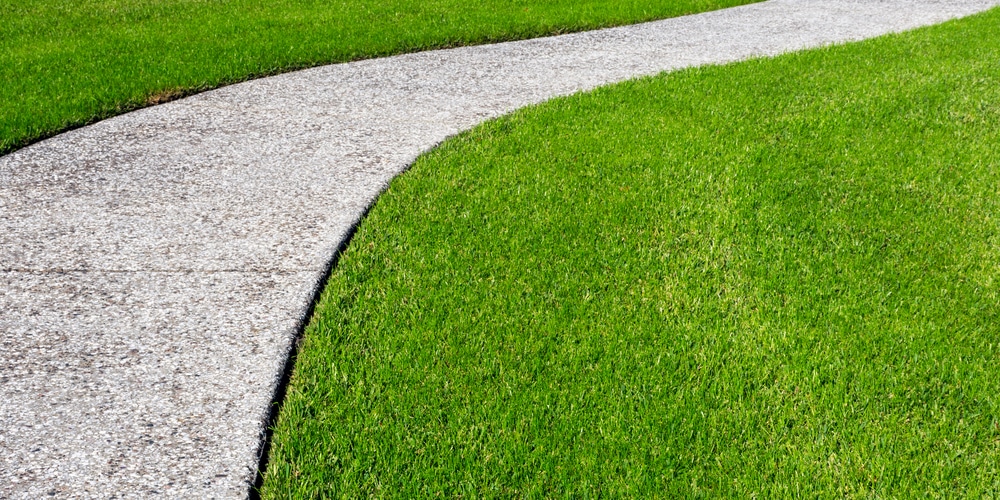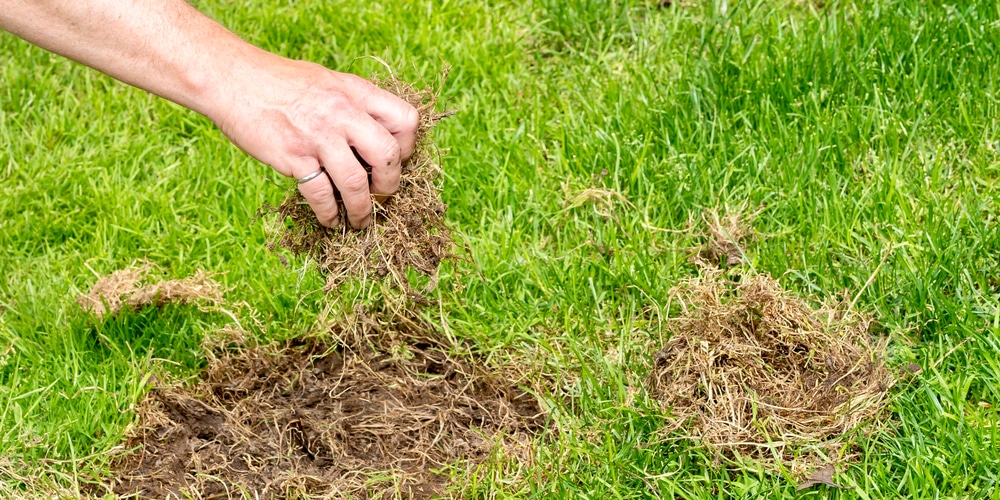When you’re tending to your lawn, it can be hard to know what the best approach is. Dethatching VS Aerating? What’s the difference between these two approaches? In this blog post, we’ll explore how a lawn should be maintained and the benefits of both methods.
What is aerating?

Aerating a lawn is the process of creating small holes in the soil to allow greater oxygen, nutrients, and water access to the grass’s roots. This job should be done twice annually, one in the spring and again in the fall.
Aerating is fairly easy to do; all you need is a garden fork to prick small holes in your grass. Alternatively, you can buy an aerating tool which attaches to your shoes. This will allow you to walk backward and forwards across your lawn, creating small holes as you go.
What is dethatching?

When comparing dethatching vs aeration, dethatching is the more challenging of the two to do.
Thatch is a layer of dead grass stems, roots, and other debris that builds up from year to year. Dethatching removes thatch from around the grass stems, allowing water, nutrients, and oxygen to access the soil and roots.
Dethatching is sometimes done in conjunction with aerating, but while dethatching promotes better turfgrass growth, it does little to improve soil conditions. Dethatching should be done in mid-spring after the grass has been dormant over winter months due to cold weather and before green growth begins. After dethatching, there will be room for plenty of sunlight and water to penetrate the soil.
How to dethatch a lawn?
The thatch should be completely removed. This means you should go over areas more than once during the dethatching process. Generally, it is best to start at the outside of the lawn and work your way inward toward the core of the lawn.
Thatch can build up very quickly in some cases, so if this is an issue, then you will want to address it quickly before it gets too thick.
It is best to use a dethatching machine, which you can purchase at most hardware stores. A simple manual tool that can be used if you do not have access to these machines is standard rake or hoe. If using a hoe, you should ensure that you are using a sharp blade that will rake the surface. This will prevent the tearing of grass stems. The most important thing to remember is to take your time when dethatching to avoid further damage to your lawn.
Dethatched lawns should be watered immediately after the process is completed. This helps re-hydrate the roots, which will also help stimulate new root growth. In fact, this is a good time to apply fertilizer as well as any other type of maintenance that you may provide your lawn throughout the year.
Dethatching VS Aerating lawn
Dethatching and aerating both have different purposes, but they will both improve the health of your grass. To determine which process you should do to your lawn depends on several factors:
Type of thatch
There are two types of thatch, spongy and compacted. If you have a thin layer of thatch, less than one inch in-depth, you can aerate the lawn. However, if your lawn has a deep accumulation of thatched material 4 to 6 inches or more, it’s best to dethatch.
Appearance
Many homeowners decide to dethatch their lawn for aesthetic reasons. Your lawn may not look as nice as it once did if it has a layer of thatch; removing the thatch will give you a lush green lawn that looks great and is healthier.
Pests
Dethatching also removes eggs from some pests like chinch bugs that can cause damage later in the season. However, this activity can be counterproductive if you have an active grub infestation. Thatch may be acting as the only natural defense against pests. If you remove the thatch, insects will just move in and feed on your lawn’s roots.
Seeding
If you’re planning to spread new seeds over a large area, dethatching can help your new seed to penetrate into the ground.
Conclusion
Don’t get the two confused! While they both have benefits, dethatching VS aerating are different practices. Aerating is the process of creating small holes in the soil below a grass surface to allow greater oxygen, water, and nutrients access to grassroots. Dethatching removes thatch from around the grass and can improve the appearance of a lawn and the health of the grass.

